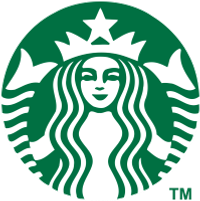
Starbucks Corp
NASDAQ:SBUX
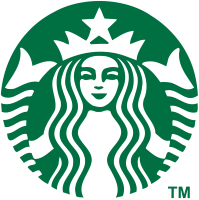

| US |

|
Johnson & Johnson
NYSE:JNJ
|
Pharmaceuticals
|
| US |

|
Berkshire Hathaway Inc
NYSE:BRK.A
|
Financial Services
|
| US |

|
Bank of America Corp
NYSE:BAC
|
Banking
|
| US |

|
Mastercard Inc
NYSE:MA
|
Technology
|
| US |
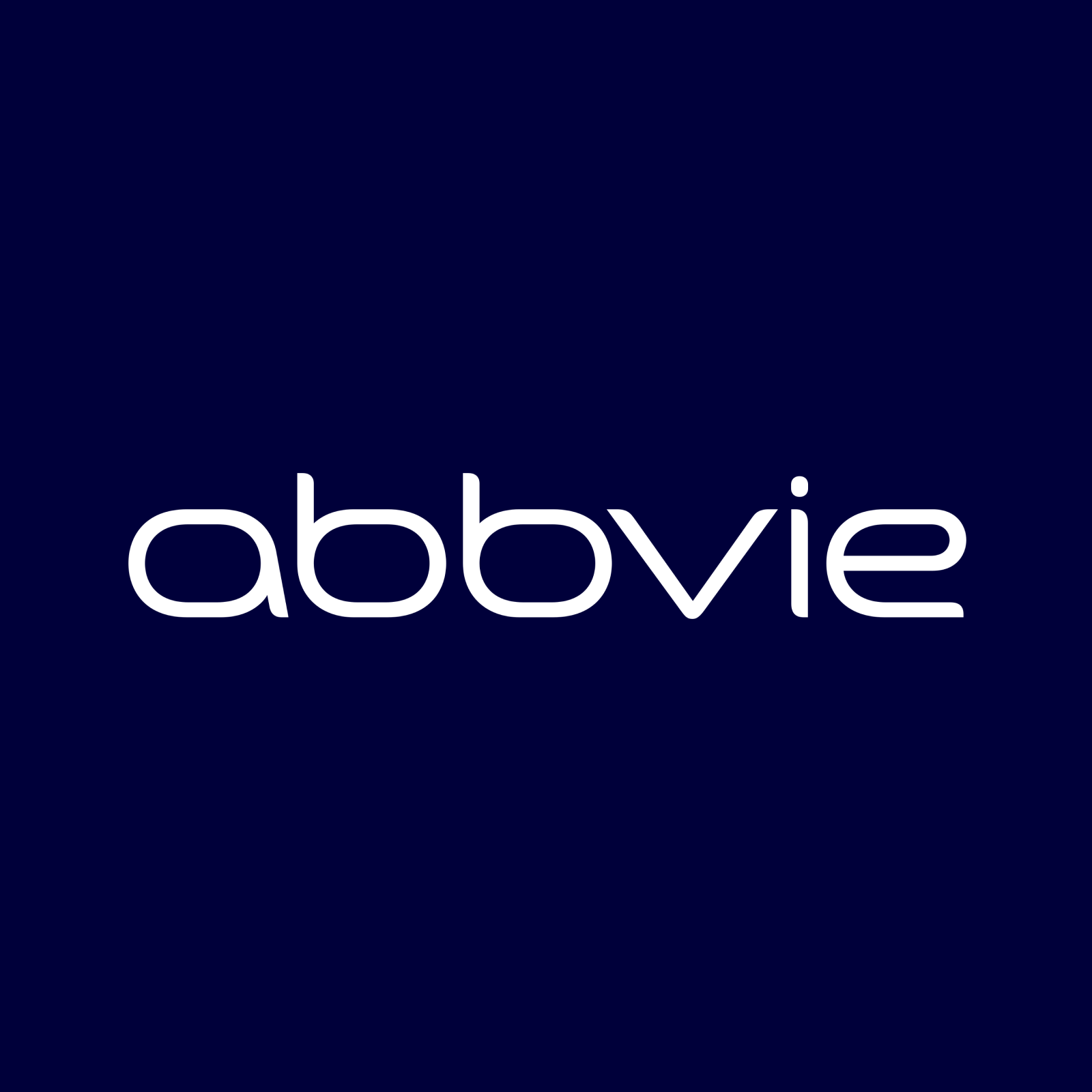
|
Abbvie Inc
NYSE:ABBV
|
Biotechnology
|
| US |

|
Pfizer Inc
NYSE:PFE
|
Pharmaceuticals
|
| US |

|
Palantir Technologies Inc
NYSE:PLTR
|
Technology
|
| US |

|
Nike Inc
NYSE:NKE
|
Textiles, Apparel & Luxury Goods
|
| US |

|
Visa Inc
NYSE:V
|
Technology
|
| CN |

|
Alibaba Group Holding Ltd
NYSE:BABA
|
Retail
|
| US |

|
3M Co
NYSE:MMM
|
Industrial Conglomerates
|
| US |

|
JPMorgan Chase & Co
NYSE:JPM
|
Banking
|
| US |

|
Coca-Cola Co
NYSE:KO
|
Beverages
|
| US |

|
Realty Income Corp
NYSE:O
|
Real Estate
|
| US |

|
Walt Disney Co
NYSE:DIS
|
Media
|
| US |

|
PayPal Holdings Inc
NASDAQ:PYPL
|
Technology
|
Utilize notes to systematically review your investment decisions. By reflecting on past outcomes, you can discern effective strategies and identify those that underperformed. This continuous feedback loop enables you to adapt and refine your approach, optimizing for future success.
Each note serves as a learning point, offering insights into your decision-making processes. Over time, you'll accumulate a personalized database of knowledge, enhancing your ability to make informed decisions quickly and effectively.
With a comprehensive record of your investment history at your fingertips, you can compare current opportunities against past experiences. This not only bolsters your confidence but also ensures that each decision is grounded in a well-documented rationale.
Do you really want to delete this note?
This action cannot be undone.

| 52 Week Range |
72.5
107.21
|
| Price Target |
|
We'll email you a reminder when the closing price reaches USD.
Choose the stock you wish to monitor with a price alert.

|
Johnson & Johnson
NYSE:JNJ
|
US |

|
Berkshire Hathaway Inc
NYSE:BRK.A
|
US |

|
Bank of America Corp
NYSE:BAC
|
US |

|
Mastercard Inc
NYSE:MA
|
US |

|
Abbvie Inc
NYSE:ABBV
|
US |

|
Pfizer Inc
NYSE:PFE
|
US |

|
Palantir Technologies Inc
NYSE:PLTR
|
US |

|
Nike Inc
NYSE:NKE
|
US |

|
Visa Inc
NYSE:V
|
US |

|
Alibaba Group Holding Ltd
NYSE:BABA
|
CN |

|
3M Co
NYSE:MMM
|
US |

|
JPMorgan Chase & Co
NYSE:JPM
|
US |

|
Coca-Cola Co
NYSE:KO
|
US |

|
Realty Income Corp
NYSE:O
|
US |

|
Walt Disney Co
NYSE:DIS
|
US |

|
PayPal Holdings Inc
NASDAQ:PYPL
|
US |
This alert will be permanently deleted.
 Starbucks Corp
Starbucks Corp


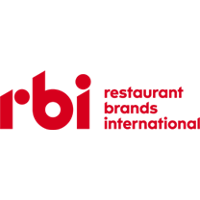
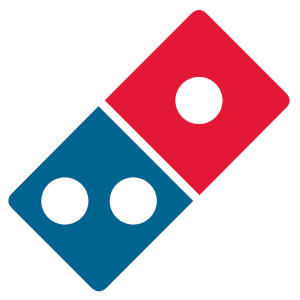
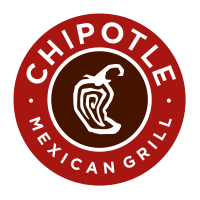


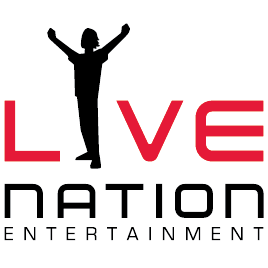

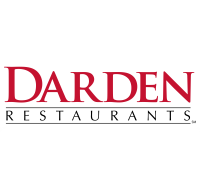





 You don't have any saved screeners yet
You don't have any saved screeners yet

Good afternoon. My name is Alex, and I will be your conference operator today. I would like to welcome everyone to Starbucks First Quarter Fiscal Year 2022 Conference Call. All lines have been placed on mute to prevent any background noise. After the speakers’ remarks, there will be a question-and-answer session. [Operator Instructions]
I would now like to turn the conference over to Tiffany Willis, Vice President of Investor Relations. Ms. Willis, you may now begin your conference.
Good afternoon, everyone, and thank you for joining us today to discuss Starbucks first quarter fiscal year 2022 results. Today's discussion will be led by Kevin Johnson, President and CEO; and Rachel Ruggeri, Executive Vice President and CFO. And for Q&A, we will be joined by John Culver, Group President of North America and Chief Operating Officer; Michael Conway, Group President of International and Channel Development; and Leo Tsoi, Chief Executive Officer of Starbucks China.
This conference call will include forward-looking statements, which are subject to various risks and uncertainties that could cause our actual results to differ materially from these statements. Any such statements should be considered in conjunction with cautionary statements in our earnings release and risk factors discussed in our filings with the SEC, including our last annual report on Form 10-K and quarterly report on Form 10-Q. Starbucks assumes no obligation to update any of these forward-looking statements or information.
GAAP results in first quarter fiscal year 2022 include several items related to strategic actions, including restructuring and impairment charges, transaction and integration costs and other items. These items are excluded from our non-GAAP results. All number references on today's call are on a non-GAAP basis, unless otherwise noted.
For non-GAAP financial measures mentioned in today's call, please refer to the earnings release and our website at investor.starbucks.com to find a reconciliation of those non-GAAP measures to their corresponding GAAP measures.
This conference call is being webcast, and an archive of the webcast will be available on our website through Friday, March 4, 2022. For calendar planning purposes, please note that our second quarter fiscal year 2022 earnings conference call has been tentatively scheduled for Tuesday, May 3, 2022.
And with that, allow me to turn the call over to Kevin.
Thank you, Tiffany, and welcome, everyone, to today's call. Before we dive into the quarter's results, I want to take a moment to reflect on the fact the world is now entering the third year of this pandemic and recognize that over this period, Starbucks has made significant progress driving our business recovery.
The last two years have been anything but linear. Many parts of the world continue to experience significant COVID-related disruptions, including Starbucks' two lead markets, United States and China. However, through a dynamic and challenging environment, three things have remained true for Starbucks. First, global consumer demand for Starbucks is strengthening across our offerings and throughout all dayparts. This is a result of our work over the past year to expand digital customer relationships, introduce new beverage offerings and provide a safe, familiar and convenient experience for our customers.
Second, we remain unwavering in the prioritizing the health and safety of our store partners and customers, even when the associated costs may create short-term earnings pressure. We have consistently provided best-in-class COVID benefits to our partners since this pandemic began. And third, the flexible operating protocols we established from the beginning of the pandemic continued to serve us well. The combination of these things has enabled us to adapt to near-term challenges while continuing to invest in what we know is a long-term opportunity for all stakeholders.
Starbucks delivered record first quarter revenue of $8.1 billion, representing 19% growth. Global same-store sales grew 13%, demonstrating strong customer affinity for Starbucks. Demand for Starbucks continues to build, and we are fully committed to capitalizing on this momentum for the long-term. That said, while we have seen extraordinary top line growth, we've also experienced extraordinary cost pressure, which impacted our margin performance.
As the Omicron variant began to quickly spread, it resulted in higher-than-anticipated costs in three key areas across our U.S. business, each of which impacted our results similarly. A highly transmissible Omicron variant amplified staffing shortages in our supply chain, resulting in higher-than-planned distribution and transportation costs. We also experienced a significant increase in our industry-leading COVID isolation pay for our partners, and we saw higher-than-anticipated costs from training and onboarding of new Starbucks partners.
As we navigate the near-term challenges of this latest COVID variant, we remain confident in our ability to rapidly adapt while continuing to drive our long-term agenda of share gains, growth and value creation.
In our other lead market, China, the zero-COVID policy there contributed to significant disruption to store hours and transaction volume. Net new store growth and performance remained strong, yet overall revenue and profitability came in below expectations. While we believe that these dynamics are contemporary, we are focused on appropriately navigating the evolving macro dynamics and balancing long-term investments in the business.
I'll now provide more insight into our Q1 results and the actions we are taking to address the current state of our business, industry and overall economy. While continuing to prioritize our partners and ensuring Starbucks delivers long-term profitable growth. In the U.S., we experienced very strong customer demand over the holiday season. Our ability to deliver the Starbucks Experience to our customers how, when and where they want, resulted in first quarter revenue of $5.3 billion. Year-over-year revenue growth of 23% was driven by a double-digit increase in customer traffic, highlighting our compelling holiday lineup and strong in-store and digital customer connection throughout the holiday season.
Customer demand increased through all dayparts and resulted in record Starbucks Card activations and reloads in excess of $3 billion. Starbucks Rewards grew 21% to a record 26.4 million 90-day active members. Average ticket grew mid single-digits, demonstrating our continued differentiation through customized premium beverages and compelling food options.
Prior to the emergence of the Omicron variant, we were experiencing some inflationary pressures and staffing issues resulting from the broader pandemic. When the Omicron surge began, inflationary costs and staffing shortages were amplified, well in excess of our expectations. As I mentioned, three primary factors: on inflation, COVID-related pay and training and onboarding of new partners impacted our profitability to approximately the same degree, even while customer demand remained strong.
Now let me outline the impacts we believe these will have for the near-term and more importantly, the actions we are taking to address each of them. Like many others in the industry, we felt the impact of Omicron in the wider COVID-19 pandemic. More specifically, we experienced a rapid increase in supply chain costs related to distribution and transportation as our third-party delivery providers had Omicron-related staffing shortages, impacting their ability to fulfill a portion of our distribution needs. This required us to greatly increase the use of much more expensive spot market and alternative delivery solutions in order to meet strong customer demand.
As a result, supply chain-driven inflationary costs were unexpectedly amplified by Omicron and rapidly accelerated in December, impacting our U.S. business by more than 170 basis points on margin in the quarter. As we entered fiscal year 2022, we had estimated full year inflationary impacts of around 200 basis points on margin. For the balance of the year, we expect these costs to increase versus our previous estimate. Like most economists, we anticipate supply chain disruptions will continue for the foreseeable future.
We have already taken pricing actions this fiscal year, one in October 2021 and another in January 2022. And we have additional pricing actions planned through the balance of this year, which play an important role to mitigate cost pressures, including inflation, as we position our business for the future. There are many factors that contribute to our thoughtful pricing strategy, including: the increasing U.S. inflation rate currently running at 7% or perhaps greater as well as wage, customer demand and other costs; second, the rapid spread of Omicron through the U.S. required us to quickly adapt store protocols.
From our very beginning, and as we've demonstrated throughout this pandemic, Starbucks has always prioritized the health and wellness of our partners by offering some of the best benefits in the industry. This moment is no different. Our COVID vaccination pay has supported thousands of partners and the broader efforts in helping get more people vaccinated. And with the highly transmissible Omicron variant, we had more partners leverage our COVID isolation benefits as they were either home sick or home isolating after being exposed to the virus, which led to significantly higher COVID-related benefits paid than expected.
We expect similar usage of COVID isolation and vaccination pay through this next quarter, moderating in the back half of fiscal 2022. Throughout this pandemic, COVID isolation pay has been a critically important partner benefit. To help offset the higher-than-expected expense of this benefit, we are taking the necessary measures to reduce spending in discretionary areas of our U.S. P&L.
As an example, with strong customer demand, we believe we can tighten up a bit more in our G&A expenses, including promotional spend and marketing. We believe these measures are prudent as we work to balance increasing cost pressures with our commitment to our partners. Finally, with approximately 4 million Americans who have not yet returned to the workforce, nearly every business in the services industry is facing staffing challenges and increased turnover.
The battle for talent is notable. While Starbucks has always been committed to attracting and retaining the best partners with our differentiated pay and benefits package, we too experienced staffing issues. In response to this challenge and as an employer of choice, we hired an increasing number of new partners into our business this past quarter, which rapidly increased our training costs well above historic levels. This investment is critical to the success of our business as we work to create a great Starbucks Experience where partners feel supported and customers feel uplifted.
We know from experience that the continued investments in our partners, both tenured and new, will continue to drive the levels of customer connection and overall productivity that support the long-term success and differentiation of our business. And we remain confident that the $1 billion investment in partner wages and hours that we announced on our fiscal 2021 Q4 call is the right long-term investment to ensure we have the very best talent to support our business.
In addition to these actions and as we highlighted on the last call, we continue to implement operational efficiencies throughout the organization to drive the productivity critical to our commitment to long-term margin expansion.
In summary, the demand in our U.S. market is very strong, and we have tremendous opportunity for continued growth, as highlighted by our robust revenue results. As a leadership team, we hold ourselves accountable to the actions we have outlined to ensure our revenue growth is also reflected in our bottom line. To deliver compelling financial results to all Starbucks' stakeholders, we must continue to balance ongoing profitability with long-term investments.
Turning to China. We continue to grow our store footprint in Q1 as we surpassed 5,500 stores in the market. This brings our global store footprint to a record 34,317 stores. It's important to note that our latest generation of new stores in China continued to perform well as best-in-class store profitability and return on investment were achieved. Our 90-day active Starbucks Rewards members in China reached nearly 18 million, an increase of 2.6 million versus prior year, with members contributing 75% of sales.
Mobility restrictions and the country's zero-COVID policy have presented significant headwinds, contributing to a minus 10% same-store comp after adjusting for the VAT subsidy from a year ago. We adhered to COVID health regulations and, as a result, experienced closures dynamic store protocols or reduced operations in 3/4 of our stores throughout China exiting Q1.
That said, our business in China continues to represent significant long-term growth. We are playing the long game as we navigate a dynamic environment. We are encouraged by the performance and growth in our digital offering as it drives new customer occasions and opens new channels of convenience.
Digital ordering continues to resonate with customers, growing to a Q1 record 38% of sales. Customer demand was evident across both the morning and afternoon dayparts. This coupled with our continued store expansion is a testament to the significant growth opportunity in the market.
Through these challenges, however, our partners persevered and responded to ensure in-store safety by staffing health stations, taking temperatures and ensuring masks were worn by both partners and customers. Importantly, our customer connection scores were at an all-time high in the quarter. This is a testament to the resiliency of our partners and the strength of our brand, giving us confidence that as COVID-related restrictions eventually abate, our opportunity for growth in China remains as compelling as ever.
Looking more broadly at the international markets outside of China, we saw strong results for the quarter. The broad portfolio of markets in our International segment, excluding China, delivered outstanding results this quarter, posting 27% revenue growth with strength across Europe, Latin America, Japan, Korea and broader Asia-Pacific. This illustrates the power of a diversified portfolio and gives us confidence in our global growth potential.
Shifting from International, we continue to see impressive revenue growth from our Channel Development markets. And we are pleased with the continued performance of the Global Coffee Alliance with Nestlé as Starbucks at-home coffee continues to gain market share over the prior year, driven by Starbucks by Nespresso.
And through our North American Coffee Partnership with PepsiCo, we recently announced our entrance into the energy category with Starbucks BAYA energy drink, a ready-to-drink beverage crafted from caffeine naturally found in coffee fruit as well as antioxidants to give consumers a feel-good boost. Energy drinks represent a rapidly growing category. We believe this new beverage differentiates us, opening up another category in the portfolio for growth.
Before I turn the call over to Rachel, I want to highlight that this quarter's record top line performance in a uniquely challenging operating environment, along with the set of actions outlined above, gives us confidence in our growth at scale agenda. While quarterly results can be difficult to predict in this dynamic environment, our strong demand and operating flexibility throughout this pandemic have enabled us to build an even stronger, more resilient company.
While we expect these complexities to persist through the near-term, Starbucks is well-positioned to adapt and continue to deliver great experiences for partners and customers. Consumer demand for Starbucks is strong across all markets and continues to grow. We will continue to balance appropriate levels of near-term profitability with the partner investments and innovations that drive customer loyalty and, in turn, long-term growth.
For over two years now, and thanks to our partners, our business has emerged stronger after each wave of a COVID surge has peaked, and we expect this will be the case as Omicron runs its course. We have significant growth opportunities ahead and the investments we are making position Starbucks to continue capturing share in the fast-growing coffee addressable market while driving double-digit earnings growth over the long term.
With that, we are reiterating our fiscal 2022 guidance for revenue but believe it is prudent to revise margin and earnings guidance to reflect the cost pressures that were amplified by the Omicron variant. We view these as near-term pressures, and we have a clear set of actions to manage through this moment.
With that, I now turn the call over to Rachel to walk you through details of our Q1 results and fiscal 2022 guidance components. Rachel?
Thank you, Kevin, and good afternoon, everyone. Our Q1 performance showcased the strength of the Starbucks brand underscored by strong customer demand despite intermittent COVID headwinds, which accelerated this quarter given the highly transmissible Omicron variant. At the same time, it also highlighted continued industry pressures and operational challenges, which we are actively addressing as Kevin highlighted moments ago.
Starbucks delivered global revenue of $8.1 billion in the first quarter, up 19% from the prior year, setting a Q1 record, primarily driven by the exceptional holiday performance in the U.S., coupled with strong results from our global portfolio with remarkable breadth and depth despite continued mobility disruptions to our China operations impacted by the country's zero-COVID policy.
Q1 consolidated operating margin contracted 30 basis points from the prior year to 15.1% due primarily to significant investments in store partner wages and benefits as well as inflation, partially offset by sales leverage and pricing in North America. Q1 EPS was $0.72, up 18% from the prior year reflecting strong revenue growth. However, it was lower than our expectations due primarily to our U.S. business, driven by the three key factors Kevin outlined: accelerated inflation, extended COVID-related pay and increased spend on new partner training and support costs.
I will now provide some segment highlights for Q1. The North America segment delivered revenue of $5.7 billion in Q1, up 23% from the prior year, primarily driven by an 18% increase in comparable store sales, including a 12% increase in transactions and a 6% increase in average ticket. Two-year comp in this segment reached 12% for the quarter, representing the sixth quarter of sequential improvement and the highest two-year comp since the onset of the pandemic despite modified store hours across many regions. Our average ticket remained elevated even as group ordering continues to normalize, driven by pricing, record-breaking food attach, which had its seventh consecutive quarter at an all-time high and strong holiday performance.
Our drive-through windows and mobile orders continued to account for approximately 70% of U.S. company-operated sales, offering our customers safe, convenient and personalized ways to engage with Starbucks. 53% of spend in our U.S. company-operated stores was generated by our Starbucks Rewards customer base with the 90-day active membership reaching 26.4 million, up 21% over the prior year, adding 1.6 million new active members in this quarter alone.
North America’s operating margin was 18.8% in Q1, up 10 basis points from the prior year as sales leverage, pricing, sourcing savings and the benefit of the North America trade area transformation were largely offset by investments in store partner wages, high inflation as well as increased spend on new partner training, onboarding and support costs to address labor market conditions.
Moving on to International. In the International segment, we set a Q1 revenue record as the segment reached $1.9 billion, up 12% over the prior year. The growth was primarily driven by 9% increase in net new stores over the past 12 months and strong sales growth from our international licensees, including the conversion of our Korea market to a fully licensed business. These increases were partially offset by 3% decrease in comparable store sales.
Excluding a 3% decline attributable to lapping the prior year VAT benefit, the segment’s comparable store sales were flat as reoccurring COVID resurgences severely hindered mobility and impacted our business in China, where the majority of stores were operating under elevated safety protocols and reduced store hours even as we exited the quarter.
Reflecting the pandemic-related safety and mobility restrictions in China, the market’s comparable store sales declined 14% in Q1, including a 4% decrease from lapping the prior year VAT release. However, we remain committed to and focused on our growth strategy in the market.
As a result, we opened 197 net new stores and entered 16 new cities in the quarter in China, both record highs for any Q1 period. Additionally, our over 5,500 stores in the market remain committed to elevating the Starbucks Experience, setting operational records with our highest customer engagement scores in the quarter and lowest partner turnover in the last three years.
Last month, we also expanded Starbucks Delivers to the Meituan platforms market-wide, partnering with China’s leading e-commerce service provider to enhance the customer experience, continuing with our plan to grow our delivery business in the quarters to come. Outside of China, a number of our international markets across our global portfolio saw a sustained recovery in Q1, including Japan and the UK contributing meaningfully to our revenue growth.
Operating margin for the International segment was 18.3% in Q1, down 170 basis points from the prior year, mainly driven by investments in store partner wages and benefits and strategic initiatives as well as higher profit and distribution costs from a sales mix shift, partially offset by sales leverage.
Moving on to Channel Development. Revenue grew 12% to $417 million in Q1, primarily driven by growth in the Global Coffee Alliance as well as the strength in our international ready-to-drink business. Based on IRI and Euromonitor data, Starbucks once again retained the number one brand position in both the U.S. at-home coffee and global ready-to-drink categories during the quarter, reinforcing customers’ desire to replicate their Starbucks in-store experience and fulfill their Starbucks’ taste profiles while at home or on the go.
The segment operating margin was 43.9% in Q1, down 480 basis points from the prior year as our North American coffee partnership joint venture income declined due to supply chain constraints and inflationary pressures as well as business mix shifts.
Moving on to our guidance for fiscal 2022. We reiterate our fiscal 2022 global comparable store sales growth guidance of high single digit and revenue guidance range of $32.5 billion to $33 billion. Considering meaningful margin headwinds that exist in this dynamic operating environment, with inflation at its highest level in decades, COVID-19 resurgences impacting our businesses globally and a continued industry-wide labor shortage, we believe it is prudent to revise both our fiscal 2022 operating margin and EPS guidance at this time.
Based on the latest trends in our outlook, we anticipate over 200 basis points of incremental margin pressure in fiscal 2022 from inflation, COVID-related pay, new partner training and support costs as well as reduced sales from mobility restrictions combined. As Kevin outlined, however, we have and we will continue to take intentional steps to offset these pressures, including selectively accelerating price increases, tightly managing numerous cost areas as well as actioning throughput initiatives across our operations.
We also believe there will be some moderation in staffing-related costs specifically related to training expenses as our partner investments begin to translate into higher retention. Collectively, the margin benefits from these actions are expected to nearly offset the anticipated margin pressure.
In addition to these actions, we will continue to prioritize investments that will drive our growth over the long-term, including raising U.S. store partner wages as previously announced. As a result, we expect fiscal 2022 GAAP margin to approach 16.5% and non-GAAP margin to approach 17%.
Moving on to EPS. Given our Q1 results and margin pressures expected in the balance of the year, our fiscal 2022 GAAP EPS is now expected to decline by a range of 4% to 6%. Additionally, we expect our fiscal 2022 non-GAAP EPS growth to be in the range of 8% to 10% from the base of $3.10 in fiscal 2021 that excludes the extra week and is adjusted for the change in the non-GAAP treatment of certain integration costs. The EPS growth range reflects our Q1 results, accounts for the appropriate steps we are taking to manage and drive the business and account for the impacts of the three headwinds we’ve discussed.
In terms of quarterly margin and EPS cadence, we expect headwinds to intensify in Q2 as Omicron disruptions escalated in January. While the intensity throughout Q2 is unknown, we expect Q2 quarterly non-GAAP EPS and margins to be below prior year levels, with significant improvement in Q3 coming from our margin enhancement actions materializing.
Q4 is then expected to show continued recovery but at a more gradual pace, inclusive of the summer step-up in wage investments as we raise the U.S. average store hourly wage to $17. Assuming no other significant impacts, including further impacts from COVID, we anticipate our EPS to return to double-digit growth in fiscal 2023 and beyond.
All other full year 2022 guidance metrics, including global net new store count, CapEx, interest expense and tax rates are unchanged from what we previously communicated on our fourth quarter fiscal 2021 earnings call. Despite the unexpected global impacts of Omicron or other potential variant resurgences, we remain confident in delivering outstanding top line growth in fiscal 2022, enabled by incredible customer demand, our diversified portfolio and continued ability to deliver the valuable human connection to our customers in a safe, convenient and consistent manner.
We also continue to stand by our commitment to return $20 billion to our shareholders over the next three years and have returned more than $4 billion in Q1 between share repurchases and our quarterly dividend. Finally, given the dynamic operating environment and the incremental cost pressures reflected in our fiscal 2022 guidance, we now expect year-on-year margin improvement in fiscal 2023 with a return to the long-term target of 18% to 19% in fiscal 2024. Of course, all of these estimates presume no new material business disruptions, whether from the pandemic or the broader economy.
Although our efforts to adapt to the evolving market conditions may take longer than initially anticipated, our long-term growth model remains intact, guided by the belief that the success of our company starts with investing in our partners, which ultimately creates value for customers and for all Starbucks’ stakeholders, including our shareholders.
In closing, the three key points summarizing my prepared remarks are: first, Q1 demonstrated our strong revenue growth and the resilience of our brand while also highlighting margin pressures, which we are addressing through purposeful actions; second, given the evolving macro and operating environment, we are revising our margin and EPS outlook for fiscal 2022 while reaffirming strong top line growth; and finally, we remain committed to our long-term growth model.
As always, credit for our success today and tomorrow belongs to our passionate Starbucks partners around the world who deliver a safe, authentic and personalized Starbucks Experience to our customers with care and commitment. Our partners have our greatest respect and appreciation.
With that, Kevin and I are happy to take your questions, joined by John Culver, Michael Conway and Leo Tsoi. Thank you. Operator?
[Operator Instructions] Your first question comes from Jeffrey Bernstein with Barclays. Please proceed with your question.
Great. Thank you very much. A question on the operating margin guidance for both this year and the out years. It sounds like this year, you’re now saying approaching 17% on a non-GAAP basis. But now not getting back to the 18% to 19% until fiscal 2024, albeit I guess, still growing in fiscal 2023 off of the 17%. I just want to make sure I understood that correctly. And if you could then prioritize the initiatives to return to that 18% to 19%? I know you had previously mentioned labor investment should drive sales, which would be critical. And then you had a variety of cost saving initiatives and ultimately, pricing would be there to backstop. I just want to make sure we have that prioritization right in terms of the biggest buckets that give you the confidence getting back to that 18% to 19%. Thank you.
This is Rachel. Thank you for the question. How I’d start would say, as we look at FY2022, based on what we saw in Q1 and what we’re guiding for the balance of the year, we think approaching 17%, the better gauge of our margin is allows us to – as we’re seeing, we saw cost pressures accelerate in December and we’re seeing those intensify as we noted in January and into Q2.
Now we’ll take action against those costs but it will take us a little bit of time. And so for that reason, we believe it’s prudent for us to guide approaching 17%. With that, as we exit FY2022 and as we enter FY2023, we’ll now see a lower margin – a slightly lower margin than what we had originally guided.
And as a result of that, we’re continuing to look at ways to drive sales, as you outlined. That is our biggest opportunity for us to be able to drive margin and to grow earnings in the future. So we’ll continue to invest in our business in the areas that are going to drive sales both in this year as in FY2023. We’ll also continue to focus on the areas this year and into next year that will help us continue the momentum that we’re seeing. So sales is, by and large, our biggest opportunity.
In addition to that, as we’ve outlined, we’ll continue to take pricing while we balance pricing decisions and actions with our demand. And so that will be another big opportunity for us as we continue to grow. And then we’ll continue to find efficiencies in our business. As we’ve outlined, we’ve been working on efficiencies related to productivity that will help support this year and it will also expand into FY2023.
We certainly have opportunity as we think about, from a tailwind perspective, as we see recovery, both in China as well as in our U.S. business and as we continue to further the efficiencies focusing on. But broadly, I would say sales, by and large, is going to be our continued opportunity for our growth not only this year but into FY2023. So hopefully, that gives you a perspective.
Thank you. Your next question comes from Jared Garber with Goldman Sachs. Please proceed with your question.
Hi, thanks for the question. Wanted to follow up on the previous question a little bit as it relates to margins. Rachel or Kevin, could you help frame maybe some of the pricing actions that you’ve taken? And what maybe you still have left in the chamber, so to speak, to help offset some of these pricing – or some of these inflationary pressures? And what are you seeing on the demand side as it relates to sort of elasticity of demand with these pricing actions going through in the last couple of months and then what you’re looking at going forward? Thanks.
Yes, Jared, this is Kevin. Thanks for the question. I’ve commented before, we have a very sophisticated approach to pricing that leverages analytics, artificial intelligence, and it’s overseen by a very talented team who do the modeling and look at the elasticity of demand along with the pricing actions on an ongoing basis. I think we mentioned some of the pricing actions we took both in October and January. I’ll hand to John here in a second to talk through those in the U.S. But with those pricing actions, we still saw incredibly strong demand through the holiday season. But John, let me hand to you to go through the specifics.
Yes, Jared, thanks for your question. Our pricing strategy, as Kevin has shared and Rachel as well, is driven by several factors such as inflation rates, partner investments, the infrastructure investments that we want to make, and then obviously, the investments we want to make on continuing the innovation pipeline. We do all those things while balancing the premium value for our customers and the experience we want to provide them.
As we saw inflation begin to increase in the middle of this past year, we made the decision to take pricing and we implemented pricing effective October 1. As inflation continued to grow, we saw that. We needed to take additional action and we did so effective January 1. So we’ve taken two moves around pricing to help mitigate the challenges that we’re seeing.
Now we also have additional pricing action that we have planned for the balance of the year that will additionally help offset the trends and some of the cost pressures that we’re seeing. And as Kevin highlighted, that’s being informed by the analytics and insight team. In terms of elasticity, we have not seen any meaningful impact to customer demand.
To the contrary, our customer demand continues to grow. We’re coming off of a very strong quarter in terms of transaction growth at 12% for the quarter in the U.S., the highest since pre-pandemic levels, and our ticket is also very strong as well. So we watch that very closely and we will adjust accordingly.
Thank you. Your next question comes from Andrew Charles with Cowen. Please proceed with your question.
Great. Thanks. A question for John or Leo. Obviously, the China sales environment has been challenging, and you guys are not immune to it despite some pretty impressive gains in the digital and loyalty strategies. China development remains robust and on track for the year. But just curious, what would it take for you to reconsider China development plans to slow down openings and focus more intensely on improving the same-store sales? Thanks.
Leo, why don’t you take that one?
Certainly. Hi, Andrew. First of all, I want to say Happy New Year to everyone. This is the second year – second day of our Chinese New Year here in China. Now your question on the store opening and the development, what I’d like to say is that we have actually opened more than 1,200 stores in the past two years, and most of them we actually opened during the pandemic. This is equivalent to more than one-fifth of our portfolio, which is larger than many of the other retailers in the market for years.
And what is more, as Kevin just mentioned, we have been able, all these new stores to achieve the best-in-class profitability and returns. And this goes to show the huge market potential that we are here to unlock. And so when you see this entire development, it is important to note that 70% of our growth actually in China is driven by our new store openings, and I’ll say, will continue to drive and leverage the opportunity here as we see in this market development.
And simply put, the three strategies that we’ve been working on is proven. Number one is to go wide to add them into more [indiscernible] cities. Second is to go deeper by bringing a rich and diversified stock portfolios that curate new coffee experience to our customers. And third, as the pandemic is coming back and with a resurgence, we continue to be go smarter to leverage the power of our data analytics and also to drive our store economics, including our store footprint so that we can operate in these markets.
And I have – I must say that I’ve been in this market for more than 10 years. What I’m seeing is we are really in the early stages of these markets. And as we go wide, go deep and go smarter, actually, our opening is actually helping us to build our success for the long-term. Thank you, Andrew.
And I’ll just reinforce the key point that Leo made is as we continue to build these net new stores, they’re performing at best-in-class store profitability and return on investment. And as long as we keep delivering best-in-class profitability, return on investment, we’re going to continue to lean in on building new stores and play the long game.
In your question, Andrew, is what would cause us to rethink that, the answer would be if we saw revenue and return on investment not meeting that hurdle rate that we feel comfortable with, we would reevaluate. But right now, it's amazing. Through this pandemic, as Leo mentioned, as we go wider and deeper in our new store development, they are performing extremely well. And so we're going to continue to lean in.
Thank you. Your next question comes from Sara Senatore with Bank of America. Please proceed with your question.
I wanted to ask about the U.S. same-store sales number. And first of all, did you see any impact on the top line with the advent of Omicron? I know you mentioned cost, of course, but a lot of the industry did see a dampening effect on comps in the back half of December. And then on a related note, you're seeing transaction growth when most restaurants still are not. So maybe could you talk a bit about what's happening? Is it coming in your urban markets? Does it have different regional footprint? Just trying to understand how your traffic might be recovering in a way that the rest of the industry doesn't seem to be? Thanks.
Yes. Sara, thanks for the question. Yes, we did see an Omicron impact especially amplify in the last two to three weeks of the quarter. And it played out in a couple of ways, obviously, in terms of as the cases surged, number one, customer mobility was impacted. But then also, we saw our partners also have a similar surge in the number of cases as well as call-outs, which Kevin spoke to and Rachel spoke to in terms of the Omicron COVID pay or the COVID pay that we provide our partners.
Now with that, we also were in the midst of having a record holiday quarter and couldn't be more proud of the work that the team did in terms of delivering very strong top line growth of 23% in a very, very complex environment. In terms of what we're seeing in terms of the transactions and the growth of transactions, there is a pent-up demand for Starbucks and for people wanting and longing to return to their normalized routine.
So a couple of things that I would just call out. First, the beverage attach that we're seeing in the stores continues to normalize. We've seen strong beverage mix growth across, in particular, cold beverages, which now account for 70% – over 70% of our beverage transactions. We've also seen strength in alt-dairy and the growth of alt-dairy and then also an increase in the modifier performance, whether it was the holiday beverage or the overall promotion that we saw, very strong growth. Food continues to grow and break all-time records in the quarter, and really, that's being driven by breakfast and by bakery.
The other thing I would just add is that our peak transactions improved versus the prior quarter and a year-over-year basis. And then we had strong growth on the digital side. We now surpassed 26 million 90-day active members. And as part of that, our non-SR customer transactions continued to grow and reached its highest level since the pre-pandemic.
In terms of the stores and where we saw traction in that, the suburban and the rural stores, where drive-thrus are the most prevalent, continue to outpace the rest of the portfolio. Our drive-thrus had its fourth straight quarter of double-digit comp growth. The central business district, the urban core and the urban edge recovery also continues, and it was the third quarter in a row of positive comps for all three of those urbanities.
And then the convenience channels continue to play a big role. Between MOP, drive-thru and delivery, that accounted for over 70% of our sales in the quarter. So very encouraged with the strong customer demand and the way in which our partners really were able to meet the needs of our customers and step up under very, very challenging circumstances.
And Sara, I would just add to everything John just said, what we've seen too is following each COVID wave, we've seen customer demand strengthen. And we anticipate that's going to happen following Omicron as well. But John and his team have done a fantastic job navigating this place, and I think he did a great job outlining the actions that we've taken that have driven that result.
Thank you. Your next question comes from John Glass with Morgan Stanley. Please proceed with your question.
Hi, thank you very much. Going back to productivity, what have you learned from this experience in terms of the ability to start to reduce store hours, to reduce menu items and complexity? And does that play a role in your productivity, that is to say, reducing some of those things? Or is that antithetical to your goal of driving sales?
Yes. Thanks for the question, John. I'll just comment briefly and then I'll hand it over to John to take into some more detail. But certainly, we have learned to be very, very adaptable throughout this pandemic. And so certainly, when these COVID waves hit, we know how to adapt store protocols, store hours, if we need to consolidate partners in one store and temporarily close a store, we do that. If we need to amplify certain channels like drive-thru or mobile for pickup, we do that.
So we've become very adaptable. And I think one of the things that's helped us is also see the opportunities for us to drive productivity gains certainly as we look to the future. And both are very important, how we adapt to COVID but also how we simplify the work in our stores and bring solutions that give us productivity while, at the same time, it improves the partner and the customer experience. And John, I'll let you just talk a little bit about the details of some things you guys are working on.
Yes. This is an area, John, that the team is laser focused on. And clearly, it starts with taking action to reduce the complexity of the work in our stores for our partners to meet the demand of our customers. And we've shared previous calls the work that we've got going on around automated ordering. That continues to be put in place to reduce those manual routines of our partners.
We continue to make investments in improved functionality for our equipment and better flow-through of that equipment in terms of what it's able to produce, whether that's the measuring of two machines, whether that's the warming ovens or whether that's our cold brew system, and then also at the same time, always assessing our beverage routines, ways in which we can build beverages, become more effective and more productive in building those beverages and drive better productivity.
And then lastly, in terms of eliminating low-volume SKUs, we have taken action to eliminate and reduce low-volume SKUs. We did that during the first surge of COVID where we ran into some of the supply chain challenges. We took action to pull some of the low-volume food items out of the stores, and we have not had a meaningful impact to overall sales revenue. So productivity plays a key role for us going forward, and it's an area that we're laser focused on.
Thank you. Your next question comes from Lauren Silberman with Credit Suisse. Please proceed with your question.
Thanks for the question. So on membership, so rewards membership up 21% in the quarter, U.S. traffic, 12%, so active rewards member growth has been faster than traffic, which I think is something we've seen over the past couple of quarters. Can you talk about the dynamics of that difference? And then you previously talked about members spending 2x to 3x more once they join the program. Does that still hold with the newer cohorts that are coming into the program? And if so, how long does it take for those new members to move along that maturity curve?
Okay. Thank you very much, Lauren. As I shared, we added and grew our active memberships 21% in the quarter and we now exceed 26 million active members. We added five million active 90-day members on a year-over-year basis. So Starbucks Rewards now represents 53% of the spend in our stores, which is at an all-time high and which is a three-point increase versus fiscal – Q1 fiscal 2021.
As part of that, their growth in terms of spend has grown commensurately. We're seeing significant increase in the spend in the first year of membership versus the prior 12 months of the preceding membership. We're seeing a strong lift in spend when they join, regardless of whether the customer is high or low frequency. And Rewards members, as you shared, are spending at an elevated rate and visit our stores at a 3x frequency rate versus our nonmembers. So we're going to continue, as a company, to double down in this area, and we see it as significant upside and presenting tremendous value to meet the need states of our customers.
Thank you. Your next question comes from David Tarantino with Baird. Please proceed with your question.
Hi, good afternoon. My questions on the turnover in the U.S, it seems like that might have surprised you in the most recent quarter, given your commentary about training costs and onboarding new partners. So I guess that’s a trend maybe we haven’t heard from others. So I wanted to understand kind of what you think drove that spike in turnover if you had one, and why you think that might ease as the year goes on here.
Yes, David, I’ll take that question. And clearly, it’s no secret that we’re in a constrained labor environment broadly across the country. In particular, foodservice is one of the most heavily impacted in terms of finding available labor and staffing the needs of a business. Our turnover rates, I would say, as we track them, they were and have been elevated versus our pre-COVID levels. But what we’ve done with the actions that we’ve taken as we emerged out of the quarter, we’re beginning to see that turnover rate stabilize. And basically, our hourly turnover rate has basically flattened over the course of the last several weeks.
In addition to that, we’ve also seen a significant uptick in terms of partner sentiment, which is improving as well. So for us, we are an employer of choice. We’re going to continue to make the right investments in our partners, whether that has to do with wage, whether that has to do with benefits or just really giving them the opportunity to grow with the company.
And we feel very confident that we’re going to come out of this in a much stronger place, given the actions that we’ve taken. But clearly, it is a challenging environment. We’ve had to adjust our labor models and adjust store hours to address it. And we’ve been able to navigate it thus far, and we have confidence that we’ll continue to be able to navigate that.
Thank you. Your next question comes from Andrew Barish with Jefferies. Please proceed with your questions.
Yes, good afternoon. Rachel, I was just trying to understand a little bit more on the kind of 200 basis points of other inflation and how that’s changed or different from what you were talking about kind of going into this year on the prior guide.
Sure, and I believe you’re referring to the 200 basis points that maybe Kevin addressed in his prepared remarks. There’s a couple of ways I’d look at the 200 that we had is in Kevin’s prepared remarks, we talked about nearly 200 basis points, the majority of that was inflationary pressures as we began FY2022. So as you recall, we had expected to have elevated cost pressures going into FY2022 related to the decisions we made around wage but also the inflationary pressures, both in freight and labor across our supply chain and across and through our commodities.
What we’ve seen, those costs have actually, as we’ve outlined, accelerated in December and have intensified, really largely related to Omicron into January. So when we talk about the back half of the year having another 200 basis points of headwinds, the lion’s share of that is really inflationary pressures related to Omicron that we saw in December and that we’re seeing further in Q2. That also includes the COVID-related pay as well as training.
As we get through Q2 and when Omicron subsides, I don’t know exactly when that will happen, but as it does, we would expect that our inflationary pressures related to Omicron would lessen in terms of the impact on margin. But overall, our inflationary pressures in FY2022 will remain elevated relative to FY2021.
Thank you. Your next question comes from John Ivankoe with JPMorgan. Please proceed with your questions.
Hi, thank you very much. I wanted to get back to the discussion on U.S. traffic because it looks to us that U.S. same-store traffic is still down double digits from the first quarter of 2022 to the first quarter of 2021, and despite at least what you said last quarter, a record number of discrete customers, obviously, a record number of MSR members. So I wonder like what the big kind of addressable buckets in your opinion there is to kind of re-attract the frequency of your previous customer base is kind of the first point.
And secondly, is there anything that you can do with the direct communication functions around MSR, the personalization, what have you to really step on the gas for that program to get back your overall store visitation levels back to the levels it was in 2019 or fiscal first quarter of 2020, whatever you want to call it?
Yes, John, just as it relates to the transactions that you mentioned, we are focused on getting back to those levels. A couple of things that are impacting it is obviously, the way in which our stores are set up and how customers are being mobile or not going to work and not having their normal routines. Now we did see on the good side, a positive side, return of the breakfast daypart and peak transactions, which gives us optimism for hope in terms of growing those transactions during that period.
In addition, I would say that we’re going to continue to leverage the convenience channels of Mobile Order & Pay as well as drive-through and delivery to meet the changing customer needs to drive transaction growth going forward as well.
And then lastly, I would say that we will continue to assess the store footprint to make sure that we are building new stores and relocating additional stores – existing stores into the areas where customers are, given the pandemic and the changes that have occurred in the pandemic. And Starbucks Rewards is going to play a significant role in that as part of that growth.
Thank you. Our last question comes from David Palmer with Evercore ISI. Please proceed with your questions.
Thanks. Just a follow-up on John’s with regard to on-premise traffic, it’s obviously been weak across all U.S. restaurants. Could you talk about your on-premise traffic per store and how that compares to pre-COVID? And looking at that gap, how much of that do you think is going to be an easy sales win as soon as consumers become more comfortable with regard to COVID? And how much do you think might be a lingering change just due to behaviors shifting longer-term? Thanks.
Yes. I think that what we see – well, I know what we’ve seen is that as we’ve had to adjust store operating protocols, in some cases, we’ve gone to pickup-only, we’ve gone to drive-thru-only and we’ve readjusted the format. So the ability for customers to come into the stores and to sit in the store is not at the level of capacity than it was back prior to COVID. This is an area that we’re continuing to focus on in adjusting and reopening the stores fully, number one, as we’re able to, given COVID, and number two, as we’re able to, given some of the staffing challenges that we’ve seen. So we continue to adjust and monitor this very closely and make decisions on a daily basis.
Now in terms of customers and their changing routines and how much is going to go back to where it was before and how much has changed, we feel confident that given the Starbucks Experience, our customers come to us because they love a great premium experience in a high quality cup of coffee. And whether it is coming in our stores or coming through the convenience channels, we’re going to continue to grow in all those areas and meet the change whatever it is for our customers going forward in terms of their routines.
Thank you. I will now turn the call over to Kevin Johnson for closing remarks.
Well, thank you all for joining us today. I hope you get a sense of three things: number one, this holiday period, we saw strong customer demand; number two, with the cost pressures we’re facing, we’re being proactive in a set of actions that we’re taking across the company, including pricing and tightening up in other discretionary cost areas to address this. And certainly, as we’ve seen in post – in the past COVID surges, that when those surges end, we see stronger demand return from what we saw even before that COVID spike, and we anticipate that to happen with Omicron. So we thank you all for joining us today, and we’re looking forward to having you also join our Annual Meeting of Shareholders in March. Thank you, everybody.
This concludes Starbucks first quarter fiscal year 2022 conference call. You may now disconnect.